Last year whilst staying at Brigholme Farm CL I went on a lengthy trig bagging route in Upper Wharfedale. It was a challenging route and one I would definitely not take Lynnie and Crosby on. However, the early part of the route visited the Buckden Lead Mine and that is definitely somewhere worth taking Lynnie.
The starting point for our walk is in Buckden opposite the Buck Inn. It’s a bit of a drive from Giggleswick but there is cracking scenery to take in on the journey. Lacing up our boots on a sunny day it is tempting just to walk across the car park and enjoy a pint before we set off. But I am not one for drinking in the day time so we head off on the lane to the left of the pub.
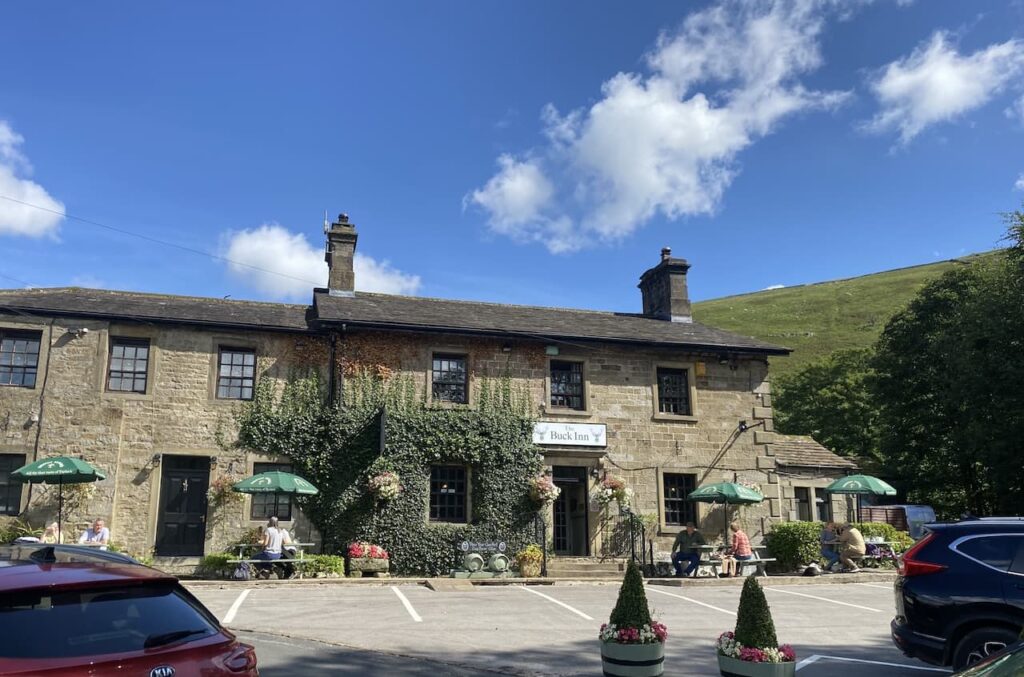
After passing cottages we follow the path to reach Buckden Beck where we turn right on a route marked by a fingerpost to Buckden Lead Mine and Starbotton.
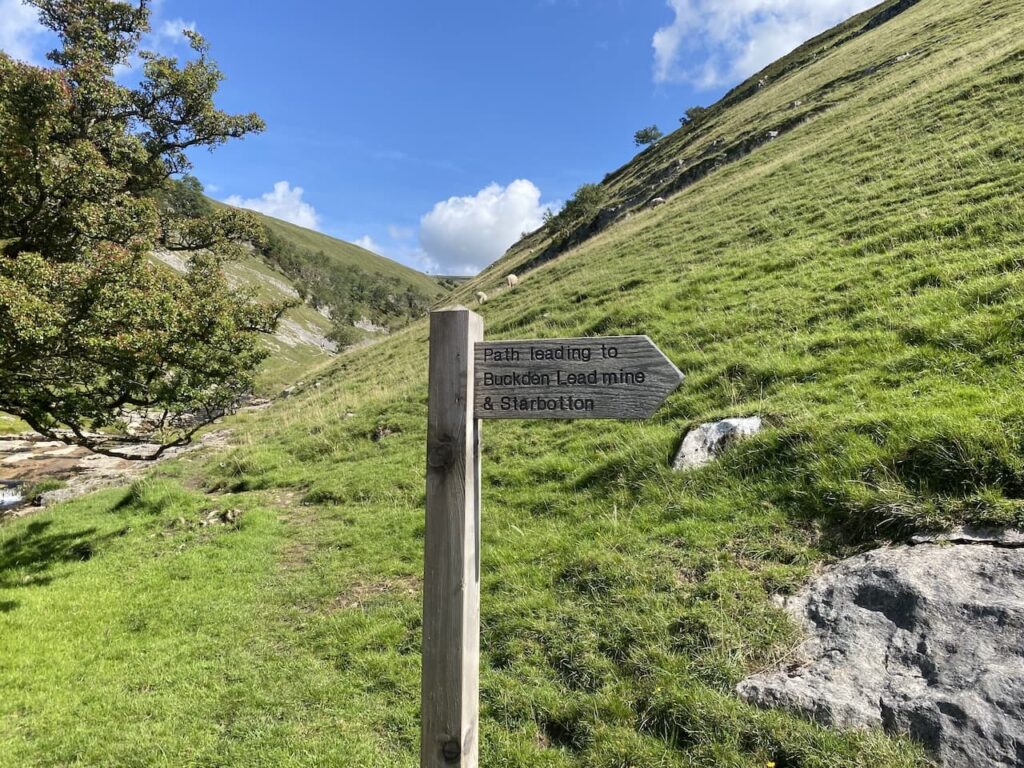
The route is easy to follow as it makes a long gradual ascent up East Side. There are cracking views back over the village behind us.

Nearing a wall the path turns northwards, still going up, to reach a junction of paths. Here we continue heading north on the route towards the lead mine. There is evidence of cattle about but we don’t encounter them until we reach a stile over a wall and they are not at all bothered by us.
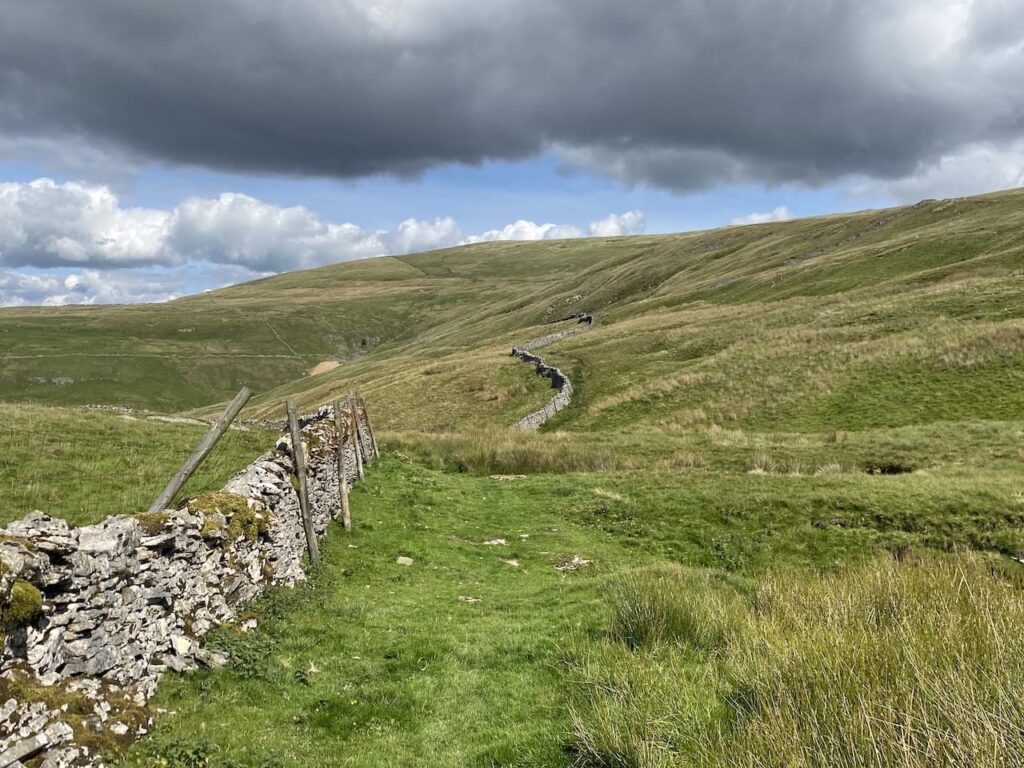
We follow the clear path and are soon at Buckden Gavel Lead Mine. Mining started here in the 1690’s but on a larger scale in 1804 when the tunnel shaft into Buckden Ghyll was created. Work continued here until 1877 by which time the lead was becoming more difficult to extract and its value was decreasing because of a fall in world lead prices.
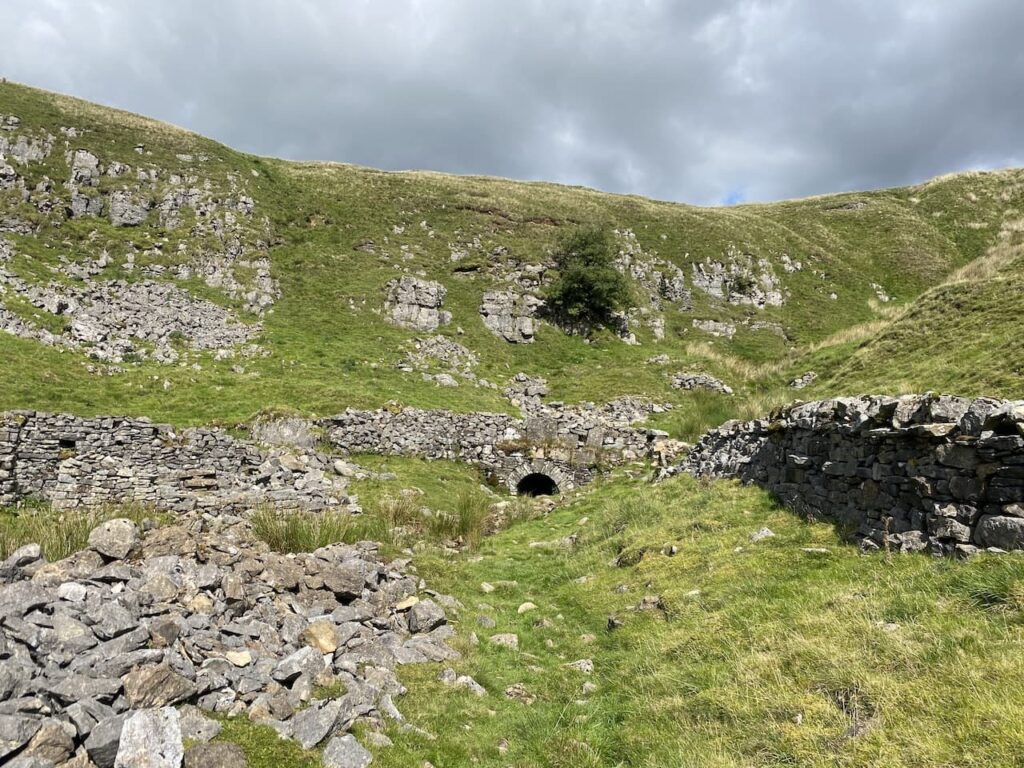
In 1964 a group of students from Birmingham University were exploring the mine network under Buckden Pike when they discovered the remains of a body. Investigations were unable to identify him, but he had a card from a funeral in Settle in his pocket from May 1890 and some coins dating from the 1880’s so had been there a longtime. His identity remains a mystery, as does how he came to die in the mine, but he has become known as Buckden Bill.
I am not tempted to enter the mine, I have read that it is very unsafe and it is easy to get into difficulty. Instead we decide this is a good place to stop for our lunch and enjoy the view down Buckden Ghyll.
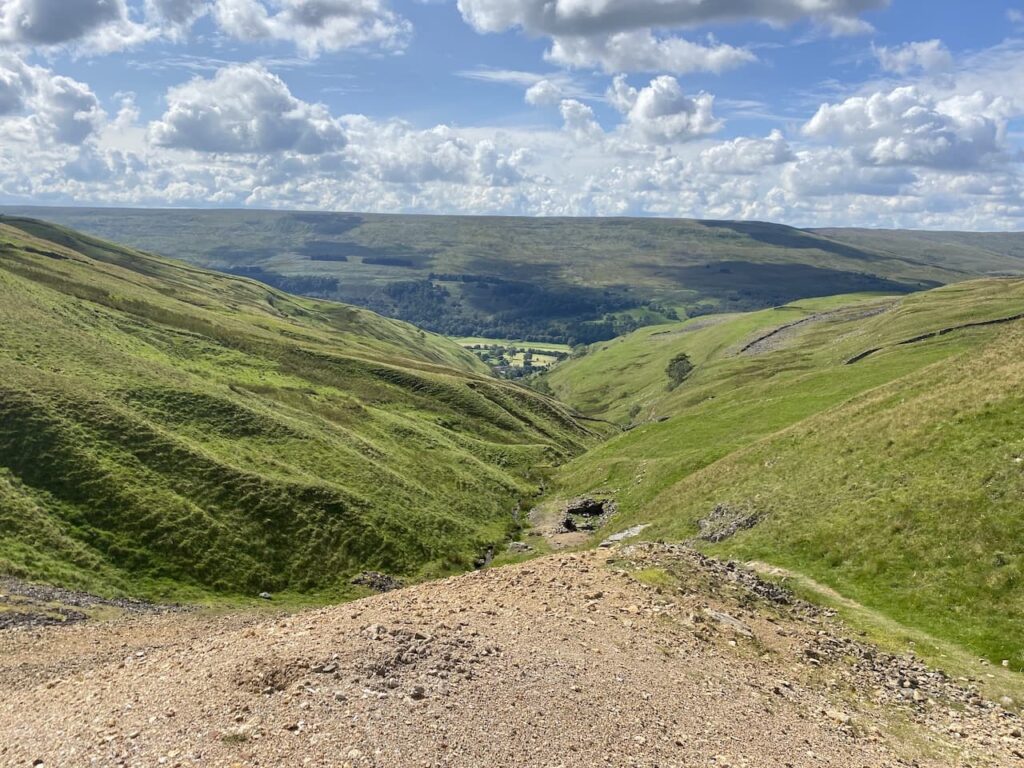
Continuing our walk we go through a wall and follow a path on the north side of Buckden Ghyll this heads uphill in a north easterly direction to join a paved path. Here we cross the wall stile so that we can visit the Buckden Pike Ordnance Survey Trig Pillar. I’ve bagged this trig before but it is the first time Lynnie and Crosby have been up here.
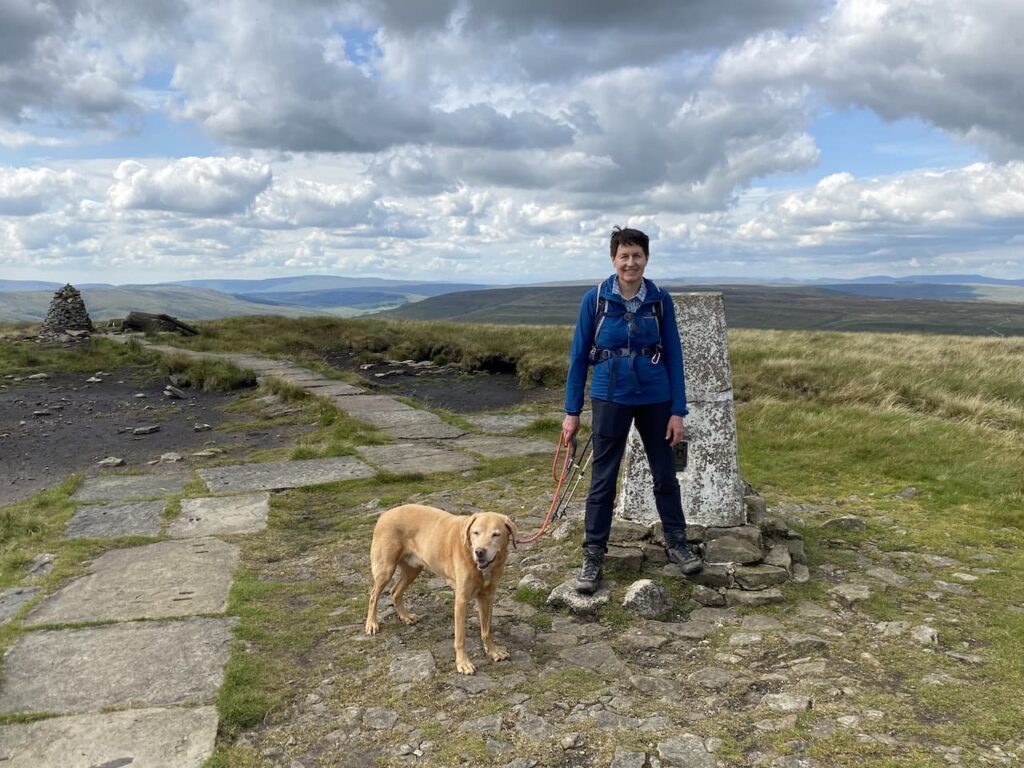
Irritatingly we have to go back over the ladder stile to continue our walk. It’s not a problem for Lynnie or I, but Crosby is becoming an old boy and jumping down from the top of these stiles plays havoc with his joints and he won’t let me lift him off.

We now follow the paved path with the wall to our left as we walk along the top of the hill.
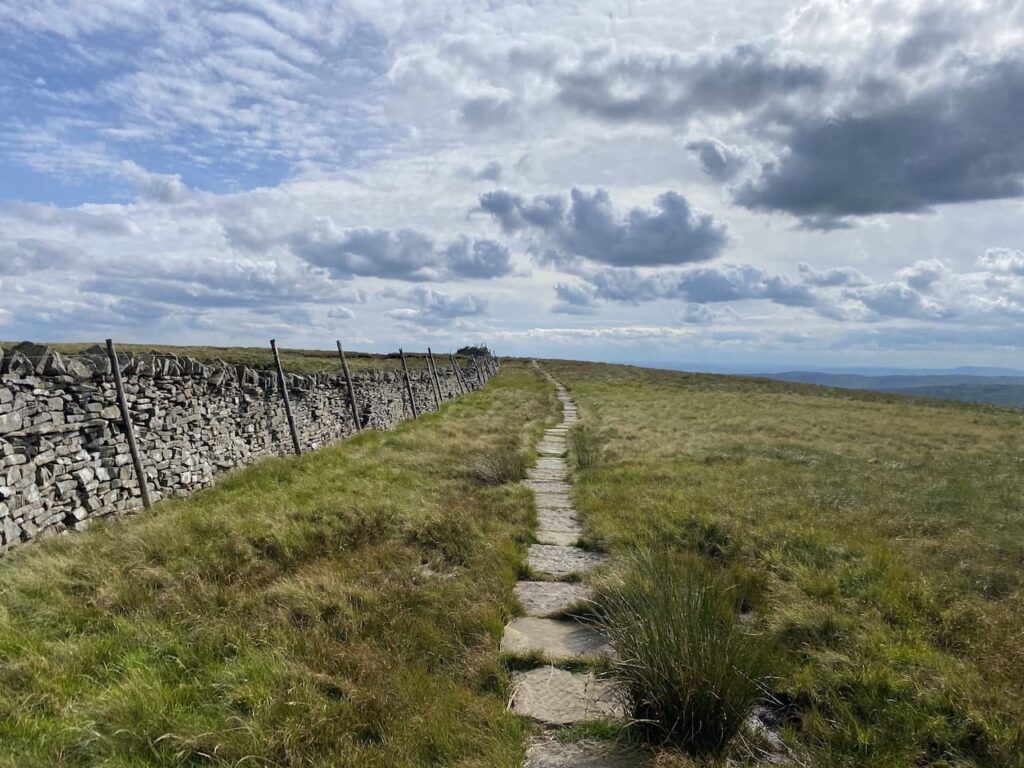
On reaching a wall stile on our left we cross, again this is difficult for Crosby. We stop to look at the Buckden Memorial. The story behind this memorial is amazing. On 30th January 1940 a Wellington Bomber with six Polish Aircrew took off from RAF Bramcote in Warwickshire on a training mission. They were hit by a sudden snow storm and the crew lost their bearings and travelled over Skipton and headed into the Yorkshire Dales.
In the total white out they couldn’t see a thing and clipped a six foot dry stone wall on Buckden Pike and the plane crashed. There were two survivors, the rear gunner, Joe Fusniak, and the wireless operator Sergeant Jan Sadowski, unfortunately Jan was seriously injured. Joe decided to go in search of help. He had no map or any idea of where he should go but soon came across the tracks of a fox and decided to follow that in the hope it would lead to human habitation. His hunch was correct and it led him to the White Lion at Cray where the landlord’s daughter, Nannie Parker, spotted him.
He was provided with warmth by the Parker family and eventually convinced the landlord he was not a German. The weather was so bad that a search party for the survivor could not be launched until the following day and sadly when located he had passed away.
After the war Joe continued to visit the site of the crash and in 1974 decided to erect a memorial to his flight companions who lost their lives in the crash. He was granted permission to erect the cross and he personally installed it with the help of a few others. It includes in the base a bronze fox head in recognition of the animal that saved Joe’s life.

From the memorial we continue, in slightly reflective mood, on a path heading in a southerly direction with a drystone wall to our right. It is a cracking day, but this spot is miles from anywhere if Joe had not followed the fox tracks he could easily have wandered off into the depths of the moor.
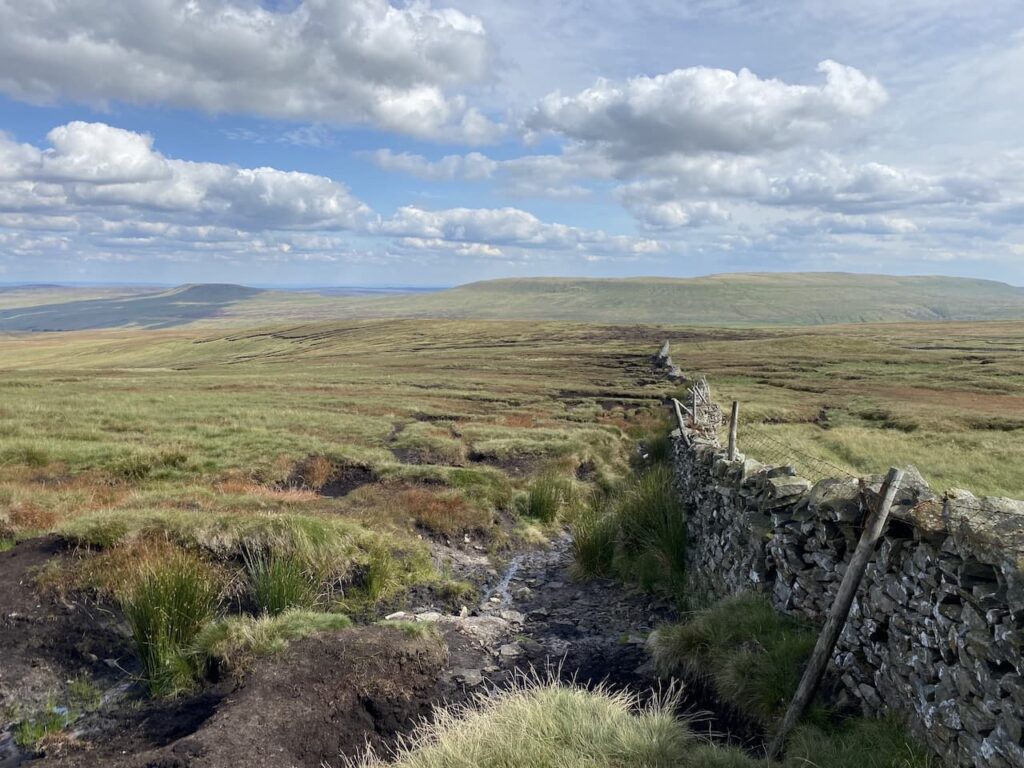
At a junction of paths we turn right and soon start to descend with stunning views in front of us.
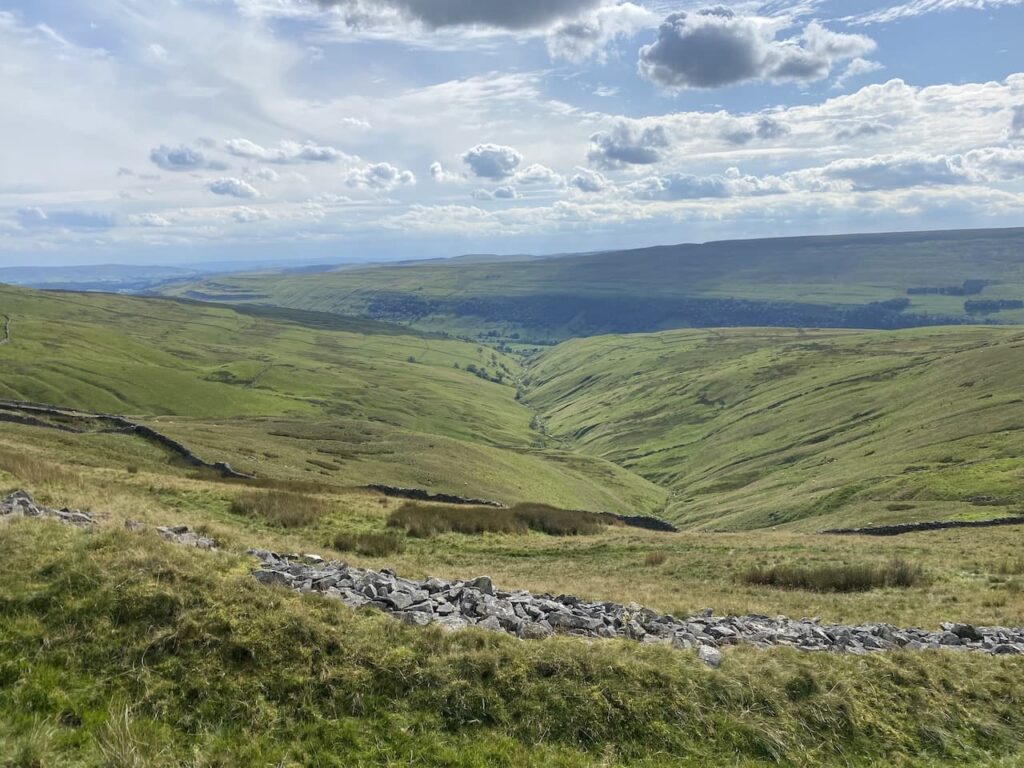
We are now heading towards Starbotton and the scenery is absolutely cracking.
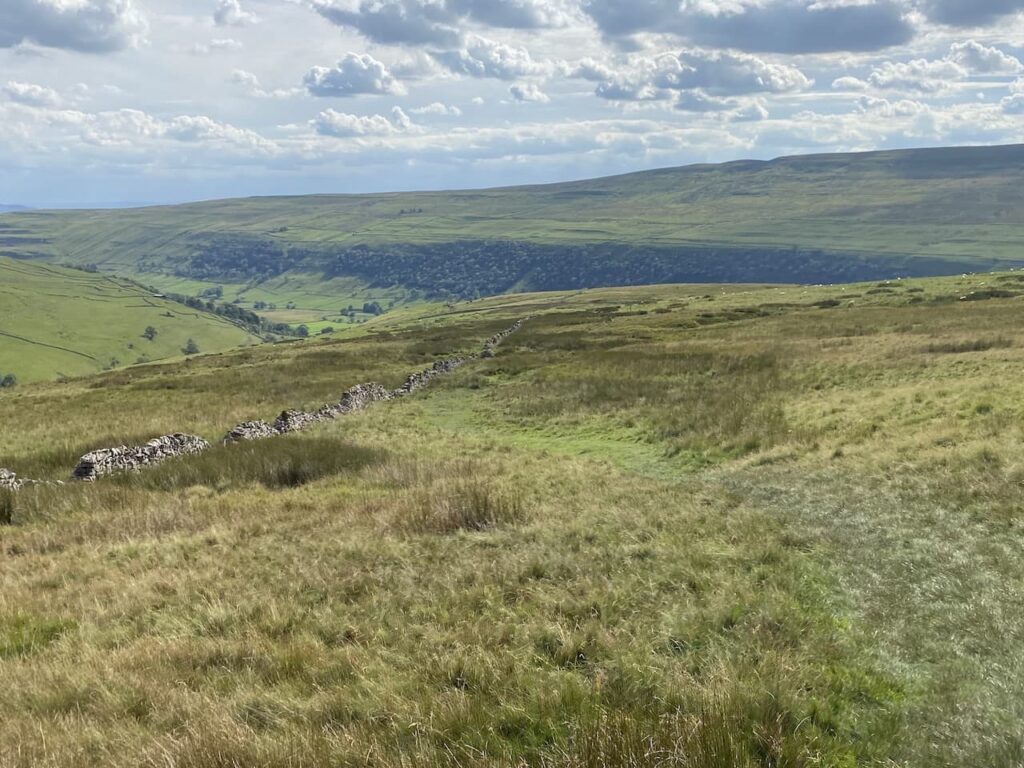
After going through a wooden gate we join a track that continues downhill towards the village.

In Starbotton we head through the village and then join a footpath heading towards the River Wharf, this has a fingerpost pointing to Arncliffe, Kettlewell and Buckden.

On reaching the River we cross on a sturdy bridge and then turn right to follow a path with the river on our righthand side.
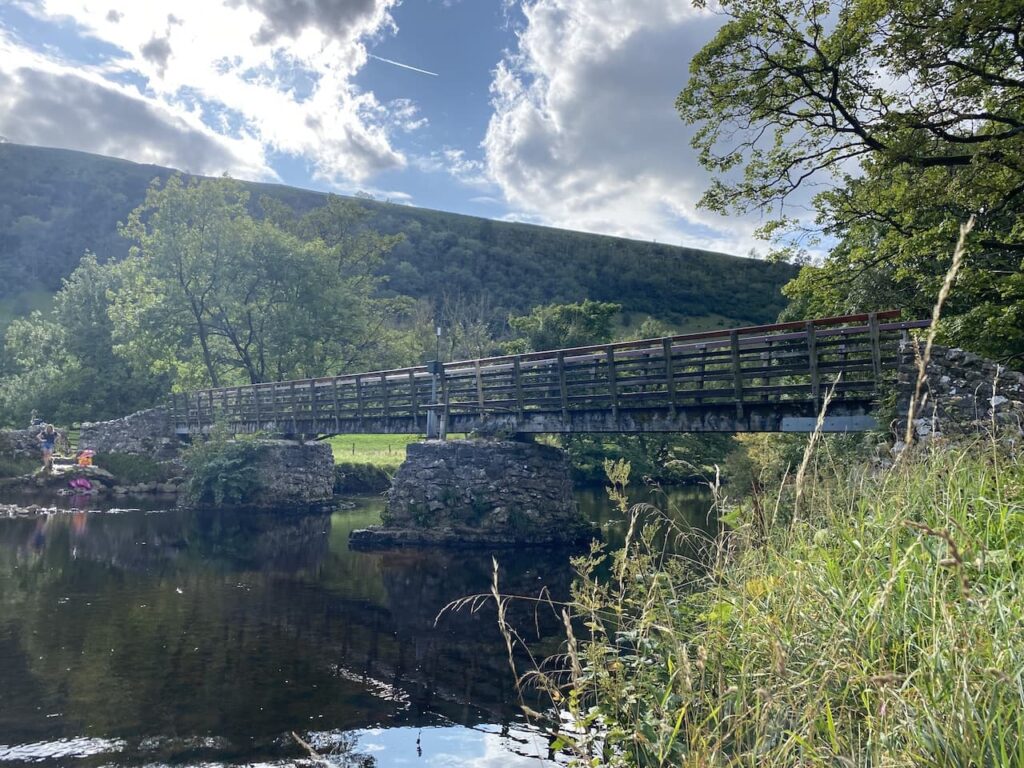
We are now on the route of the Dales Way, this is an eighty mile route from Ilkley in West Yorkshire to Bowness-on-Windermere in Cumbria. I have walked a few sections of this long distance path and keep thinking it is possibly a walk that Lynnie and I could do at some point in the future.
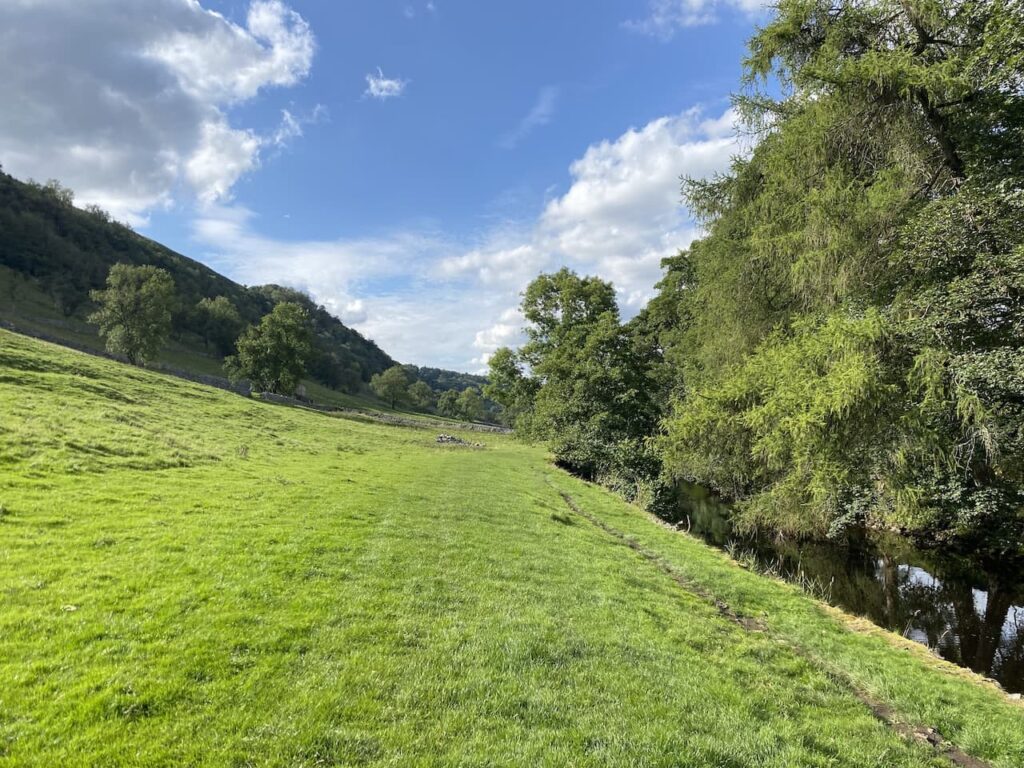
The route is now very easy to follow. There are regular Dales Way way-markers as we walk through fields.
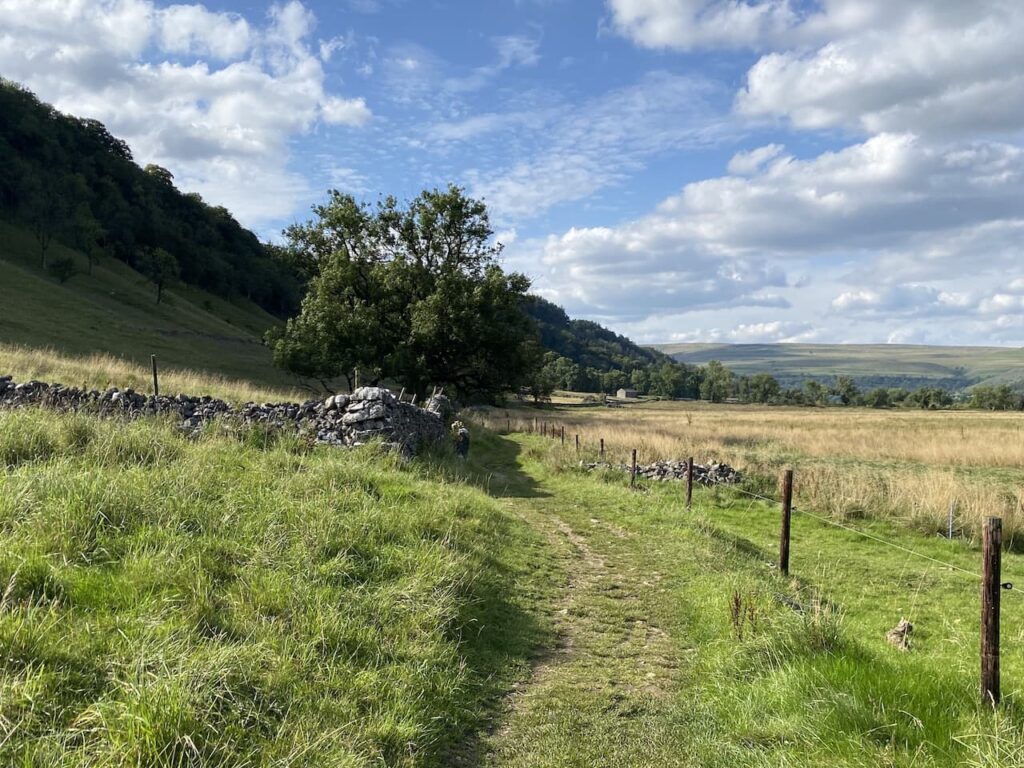
The path leaves the river for a while to follow a walled path and then passes through open pasture before rejoining the river bank as we approach Buckden.
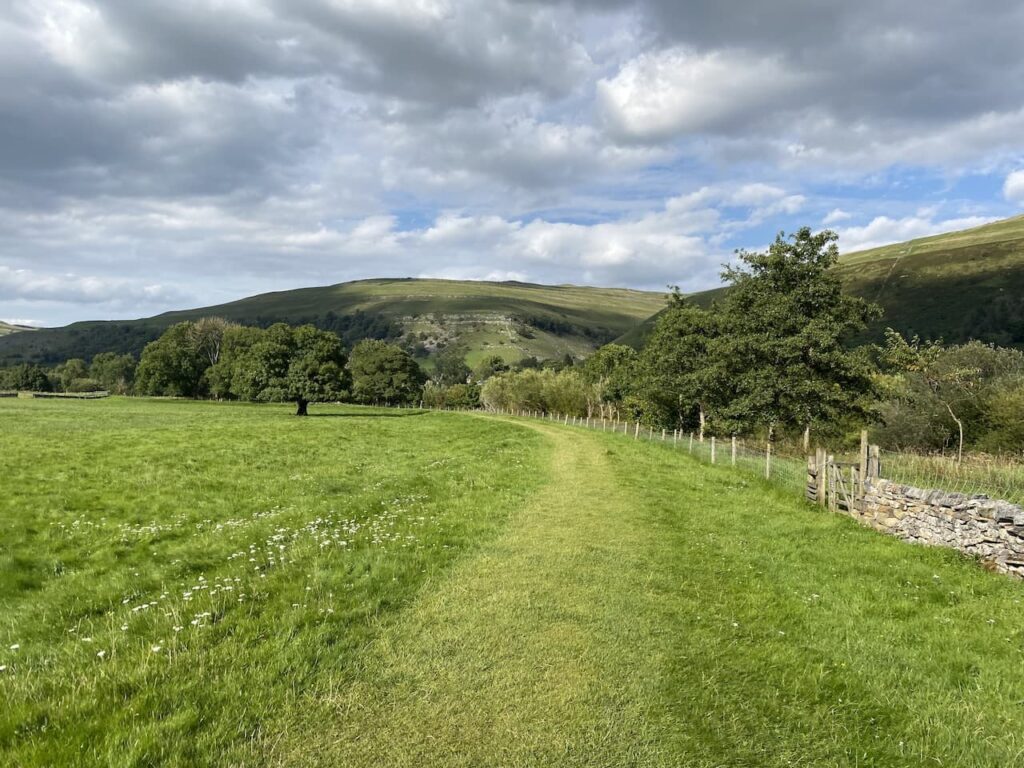
Near Buckden we reach Buckden Bridge which is thought to have been built in 1709 with some rebuilding in the 19th century.
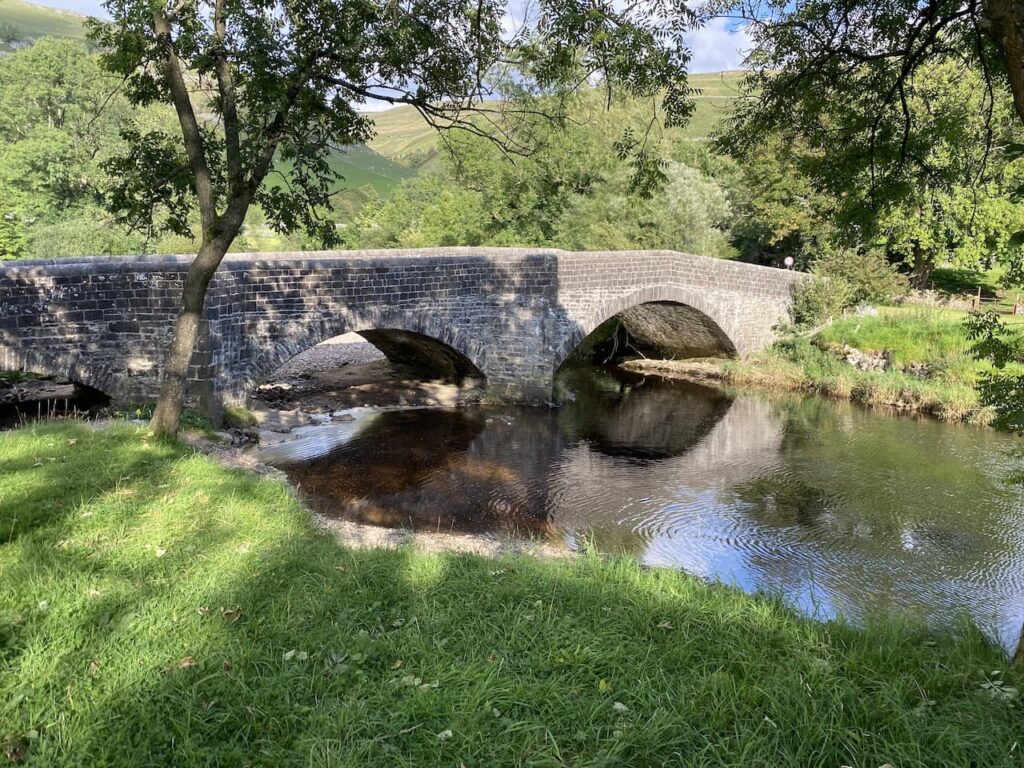
At a minor road we turn right and cross the bridge and head back into Buckden and pass the village shop on the green on the way back to our starting point.

Our walk has been absolutely stunning. It has been a cracking day for walking and whilst we have only covered 8.5 miles we have taken our time. There has been plenty to see and we have done over 2,300 feet of ascent.
You can view this 8.5 mile walk on OS Maps and download the GPX File Here
To follow our walk you will need Ordnance Survey Outdoor Explorer OL2 – Yorkshire Dales – Western Area
31st August 2023
© Two Dogs and an Awning (2023)
All information on this site is provided free of charge and in good faith and no liability is accepted in respect of damage, loss or injury which might result from it. To the best of my knowledge the routes are entirely on public rights of way or within areas that are open for public access.
Walking can be hazardous and is done entirely at your own risk. It is your responsibility to check your route and navigate using a map and compass.
